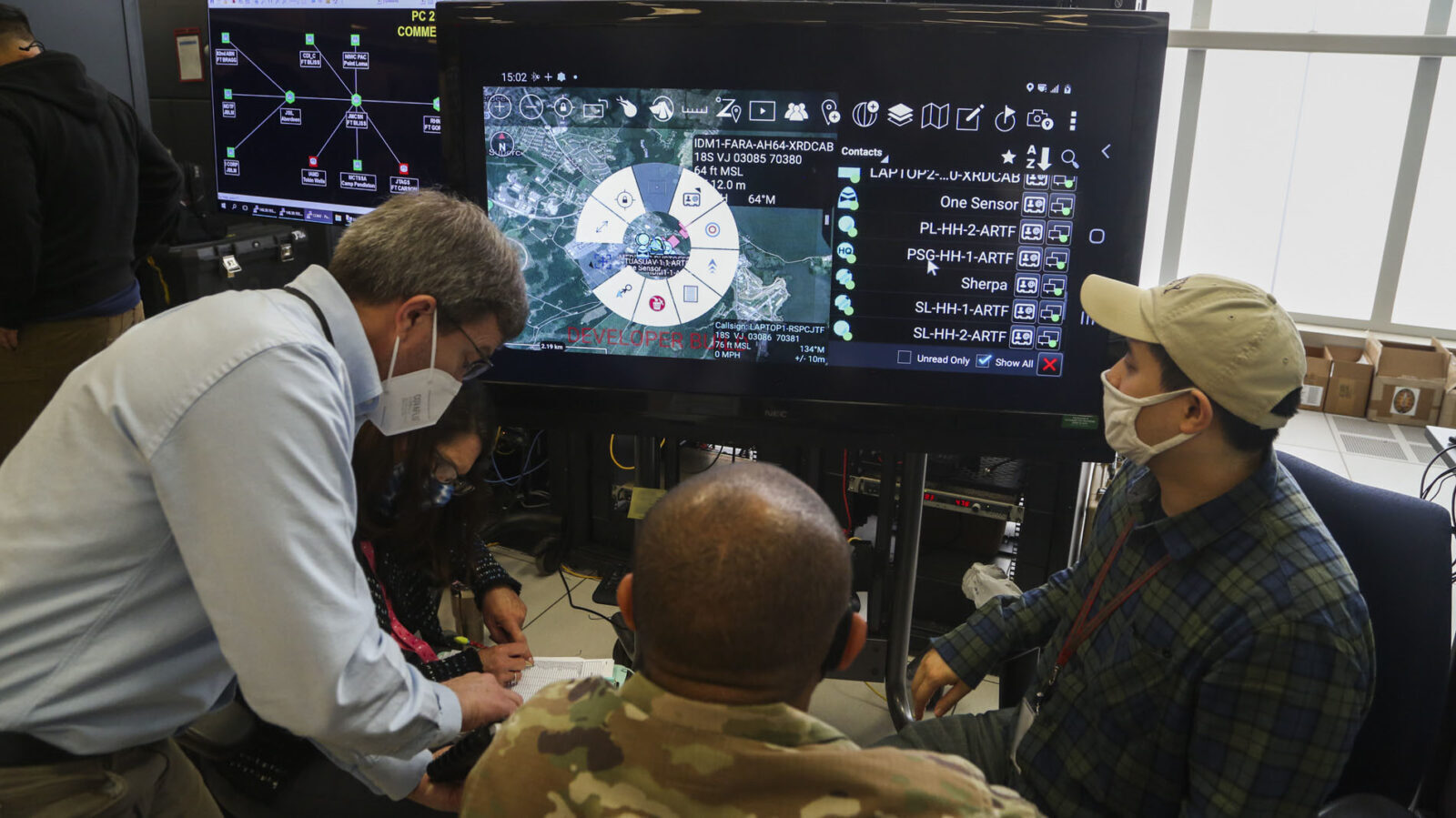
The Army’s Joint Systems Integration Laboratory hosted its second communications exercise (COMMEX 2) at Aberdeen Proving Ground April 5-16. (Kaitlin Newman/US Army)
WASHINGTON: Last June, the three-star general in the Pentagon overseeing the services’ efforts to breathe life into Joint All-Domain Command and Control had a message on a call with reporters: “It’s delivery time.”
So as the Department of Defense in 2022 continues to spend opaque billions trying to connect sensors to shooters, we will be on watch for a string of tangible, specific wins that the Pentagon and the services can point to show progress on what’s shaping up to be its biggest modernization push in decades.
“This really starts our work. It’s now implementation time,” Lt. Gen. Dennis Crall, CIO/J6 of the Joint Chiefs of Staff, told reporters in June shortly after Secretary of Defense Lloyd Austin signed the JADC2 strategy. “Planning is good. Talk is good. Now it’s delivery time, and we’ve been given a clear signal to begin pushing these outcomes to the people who need them.”
The military services’ are working individually on their own contributions towards Joint All-Domain Command and Control. The Army has its Project Convergence, the Air Force is developing its Advanced Battle Management System and the Navy has its highly classified Project Overmatch. The efforts are guided by the Joint Chiefs of Staff, but the high-ranking officials at that organization are not involved in the day-to-day efforts on building out JADC2.
[This article is one of many in a series in which Breaking Defense reporters look back on the most significant (and entertaining) news stories of 2021 and look forward to what 2022 may hold.]
2021 saw the completion of the JADC2 strategy and its accompanying implementation plan, which, as of late November, was sitting on Deputy Secretary of Defense Kathleen Hicks’ desk. As of publication, it doesn’t appear that document has been signed out; with DoD spokesperson Eric Pahon telling Breaking Defense that the deputy secretary’s office has “nothing to provide” on the JADC2 implementation plan.
While the details of the implementation plan are largely classified, Army Brig. Gen. Rob Parker, director of the JADC2 Cross-Functional Team, highlighted the seven minimum viable products that JADC2 will deliver on first: cloud capabilities; DevSecOps software development environment; zero-trust cybersecurity, network transport layer; assault breaker II, an anti-access/area denial capability; mission partner environment; and Identity, Credential and Access Management, or ICAM.
Parker highlighted progress on ICAM and mission partner environment earlier this year. But there are a few areas that the department is struggling to find solutions. The first is zero-trust cybersecurity; the military is having a difficult time finding zero-trust cybersecurity capabilities that will work in the chaotic battlefield environment.
As for cloud, the department (finally) killed its Joint Enterprise Defense Infrastructure and replaced it with a new enterprise cloud contract called the Joint Warfighting Cloud Capability, a new multi-vendor enterprise cloud that will aim to provide network connection from the battlefield back to the Pentagon and enable JADC2. Contracts for JWCC are supposed to be awarded in April.
Next year, the department will also have to continue to work out its challenges with federated mission networking to allow disparate networks to draw information from the same resource pool. And it will continue to grapple with data standards.
As Army leaders highlighted at Project Convergence this year, the services and Joint Staff have loads of work to do to connect each individual services’ Common Operating Picture — which provides commanders an overview of the battlefield — into one standardized picture for the joint force. The department will likely continue to run into similar problems with countless platforms.
The challenge of covering JADC2 is that it’s hard to know how much money the Defense Department is spending on it every year. Almost every program has an “all-domain” tagline. No budget line for JADC2 exists.
Congress has deeply slashed the Air Force’s ABMS, citing lack of clarity around the program. The Navy rarely speaks publicly about its Project Overmatch and said its funding is classified across four budget lines. The Army, at least, provides some clarity around its spending on modernization efforts and hosts a media day for its Project Convergence.
That lack of public clarity isn’t slowing things down, with the department poised to push more money into the JADC2 effort moving forward. This year, the Pentagon created an additional fund, called the Rapid Defense Experimentation Reserve, to provide money towards promising technology that could further JADC2.
The unknown but likely increasing amount of money spent on JADC2 further brings into focus the fact that there isn’t an individual person or office to hold accountable for wrongdoing, wastefulness or failure on Joint All-Domain Command and Control. We’ll see what progress the department makes on the effort next year.






















